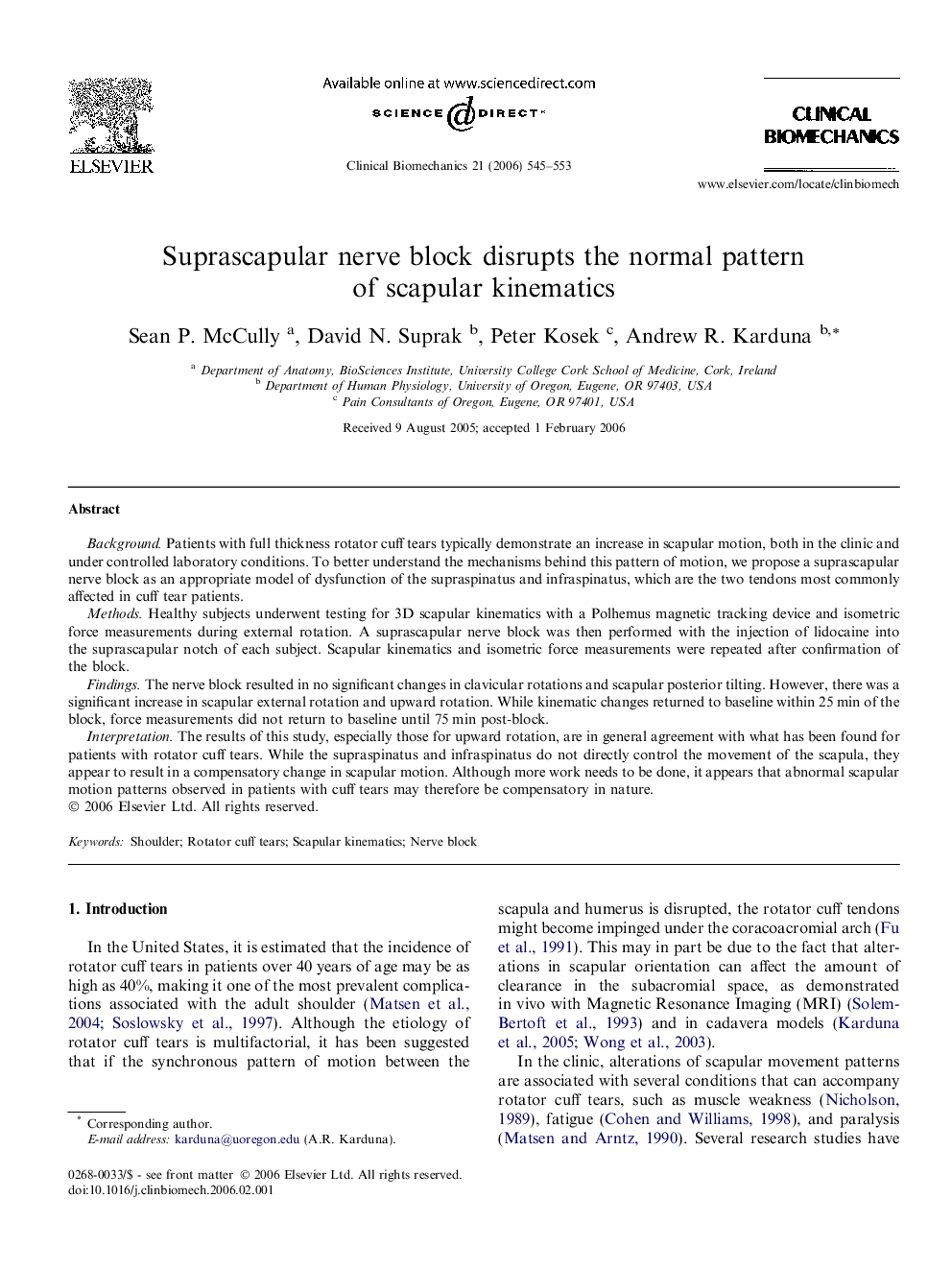| Article ID | Journal | Published Year | Pages | File Type |
|---|---|---|---|---|
| 4051559 | Clinical Biomechanics | 2006 | 9 Pages |
Background. Patients with full thickness rotator cuff tears typically demonstrate an increase in scapular motion, both in the clinic and under controlled laboratory conditions. To better understand the mechanisms behind this pattern of motion, we propose a suprascapular nerve block as an appropriate model of dysfunction of the supraspinatus and infraspinatus, which are the two tendons most commonly affected in cuff tear patients.Methods. Healthy subjects underwent testing for 3D scapular kinematics with a Polhemus magnetic tracking device and isometric force measurements during external rotation. A suprascapular nerve block was then performed with the injection of lidocaine into the suprascapular notch of each subject. Scapular kinematics and isometric force measurements were repeated after confirmation of the block.Findings. The nerve block resulted in no significant changes in clavicular rotations and scapular posterior tilting. However, there was a significant increase in scapular external rotation and upward rotation. While kinematic changes returned to baseline within 25 min of the block, force measurements did not return to baseline until 75 min post-block.Interpretation. The results of this study, especially those for upward rotation, are in general agreement with what has been found for patients with rotator cuff tears. While the supraspinatus and infraspinatus do not directly control the movement of the scapula, they appear to result in a compensatory change in scapular motion. Although more work needs to be done, it appears that abnormal scapular motion patterns observed in patients with cuff tears may therefore be compensatory in nature.
